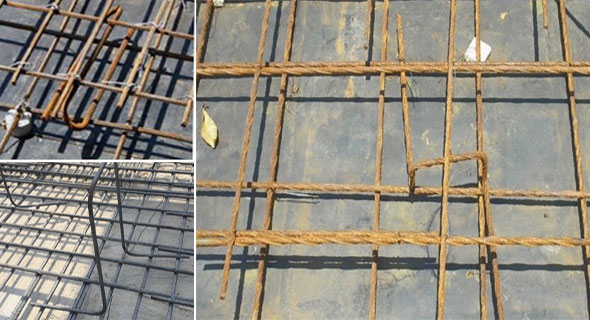Benefits of using stools in Reinforcement Detailing
- Concrete Cost Estimator
- Concrete Continuous Footing
- Landscape Bidding and Estimating
- Construction Cost Estimating
- Concrete and steel cost estimation
- Construction Cost Estimate Breakdown
- Construction Estimating Worksheet
- Home Construction Cost Estimate
- Estimate Pricing Sheet
- Sheet for General Contractor
- Construction Cost Estimate
- Labor Materials Cost Estimator
- Masonry Estimating Sheet
- Sheet for Building Contractor
- Construction Schedule Bar chart
- General Cost Estimator Sheet
- General Construction Estimate
- Building and Road Estimating Sheet
- Detailed expense estimates
- Door and Window Takeoff Sheet
- General Construction Cost Estimating Sheet

Stools are also known as chairs. The purpose of stools is to retain reinforcement at the exact location as well as detach the top reinforcement & bottom reinforcement or to arrange sufficient spaces among the meshes.
The dimension of the stools varies as per needs.
While installing the main mesh reinforcement throughout construction, steel chairs are important to retain the spacing uniformly and retain the mesh reinforcement in place ahead of and after concreting.
The stools have good strength to withstand the loads devoid of modifying the gap of two layers. 12mm or 16mm bars are used to make the stools.
Based on the construction, several types of stools are available like wire chairs, plastic chairs, or small concrete cubes or cylinders. Some are even little dog bone shapes. It is also seen in raft reinforcement in foundation & footing.
The thickness of stools is dependent on the size of footing and slab. The spacing of stools generally remains 1 square meter for one stool. The diameter of stool is equal to diameter of main reinforcement.
The stools are found in the slab specifically in the downward portion of bent up bars to maintain exact spacing between top reinforcement & bottom reinforcement.
The height of the stools = Slab thickness – (2 x Cover + diameter of the top and bottom bars)
Also Read: Types of rebar spacers or reinforcement chairs & design of rebar spacers
Features of reinforcement stools:
• Superior strength and good constancy.
• Assure uniform placement of reinforcement in slabs.
• No adjustment is needed once pouring of concrete is competed.
• Resist the wire spacer sinking into the ground.
• Erosion and rust resistant.
• Hard-wearing and long service life.
Applications of reinforcement spacers:
• Utilized in suspended slabs.
• Applied in beams.
• Applied in vertical walls.
• Applied in slabs on ground.
Go through the following video tutorial to get more clear idea.
Video Source: Civil Engineer- Fieldwork Expert

- Application of concrete calculator
- Roofing Calculator can streamline the roof estimating process
- House construction cost calculator
- Engineering column design excel spreadsheet
- Material Estimating Sheet with Excel
- Materials List and Cost Estimate Worksheet
- Concrete Slab Estimating Calculator Sheet
- Common types of foundations for buildings
- Online calculation of construction materials
- Estimating with Excel for the Small Contractor
- Concrete Beam Design Spreadsheet
- Virtual Construction Management app for construction
- Autodesk’s Project Skyscraper
- Reed Construction’s Reed Insight
- Manage your construction project documentation
- Costimator, the popular cost estimating software
- On Center Software for construction professionals
- Free Construction Estimating Software
- Plumbing Calc Pro
- Cost Estimate Worksheet
- HVAC Piping Quantity Takeoff Worksheet
- Construction Estimating Software Sheet
- Estimate Cost Templates
- Construction Punch List
- Construction cost estimating template consisting estimating basic
- Gantt Chart Template for Excel
- Download Civil Engineering Spreadsheets with Verification
- The Building Advisor Estimating and Budgeting Worksheet
- Spreadsheet for design of concrete bridge
- Construction Estimating Software Free








